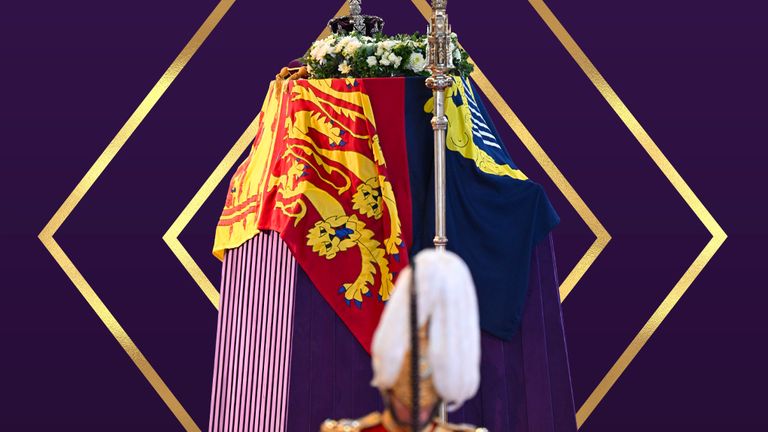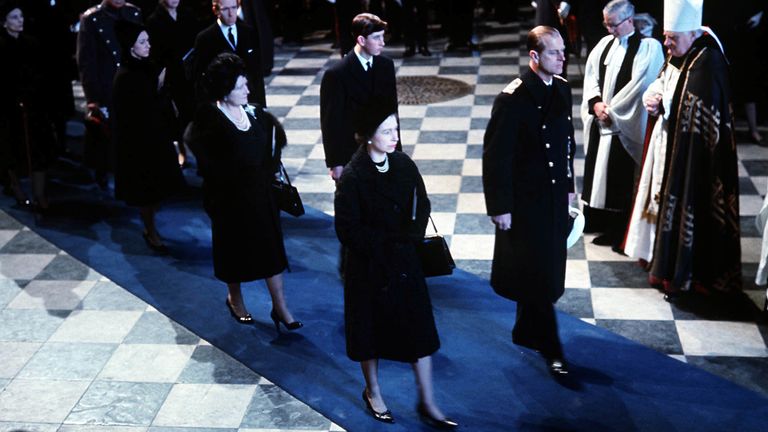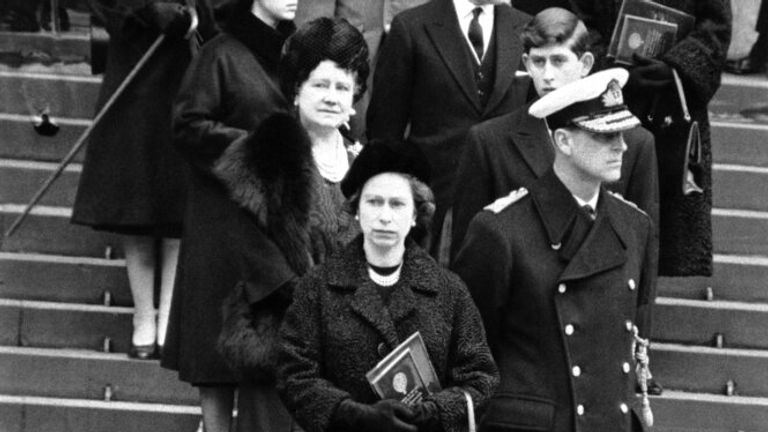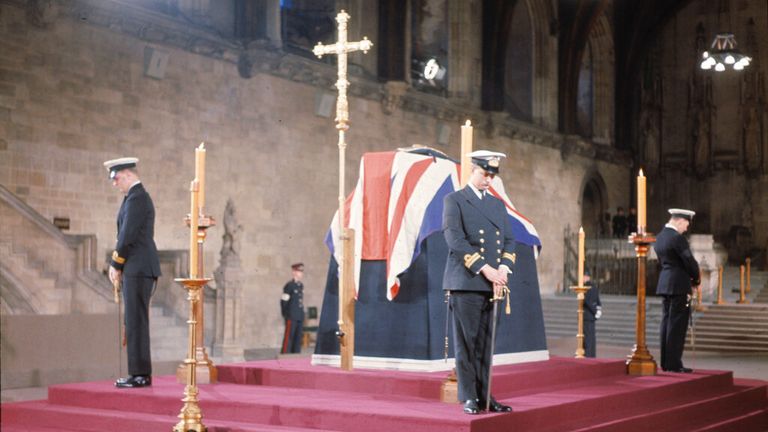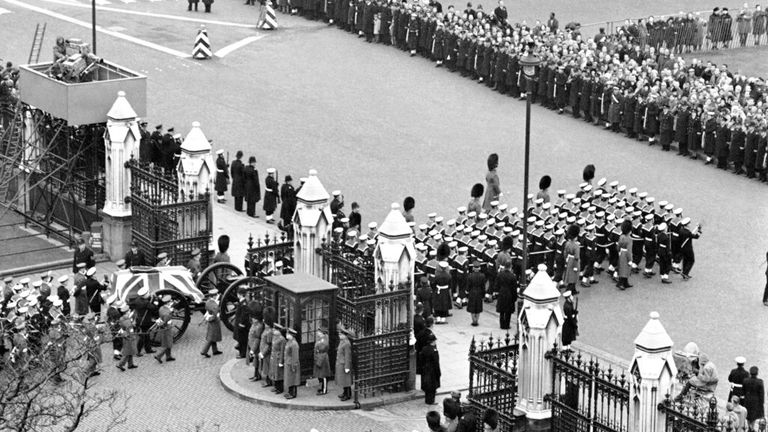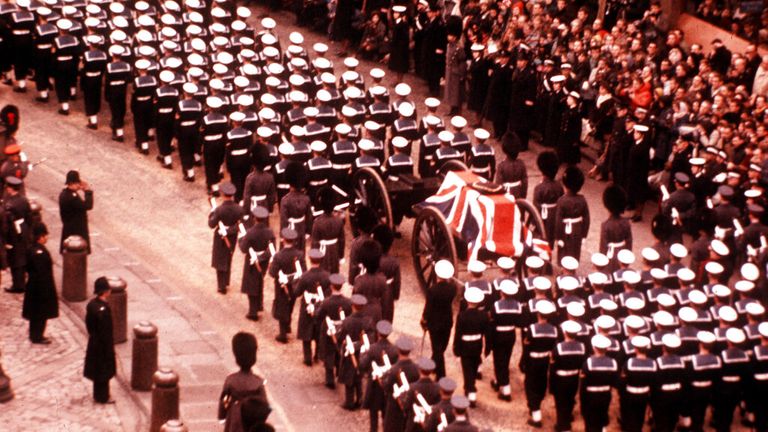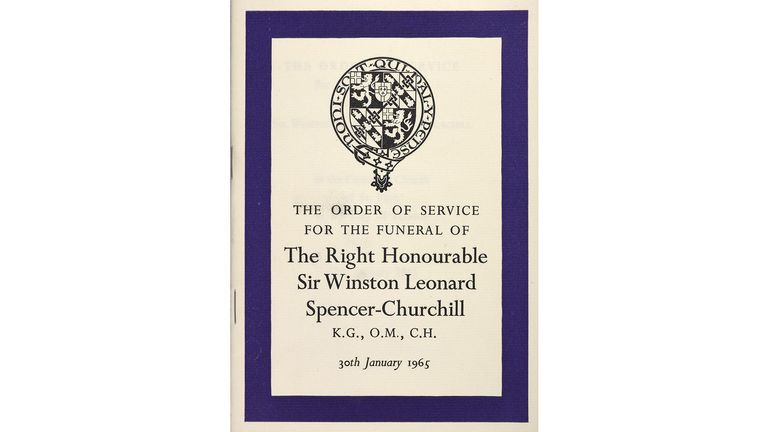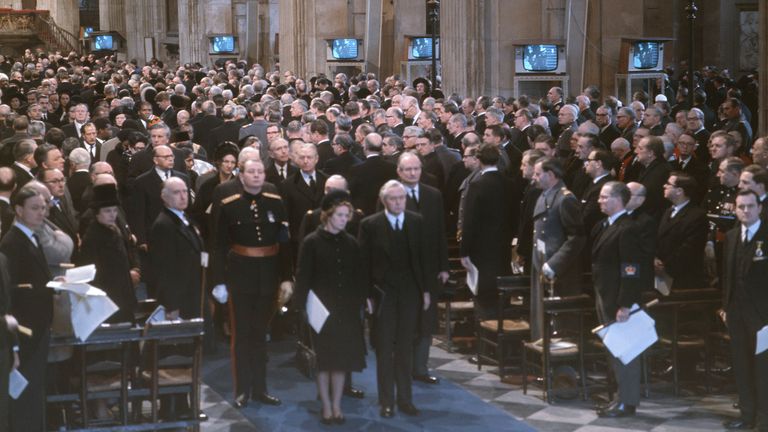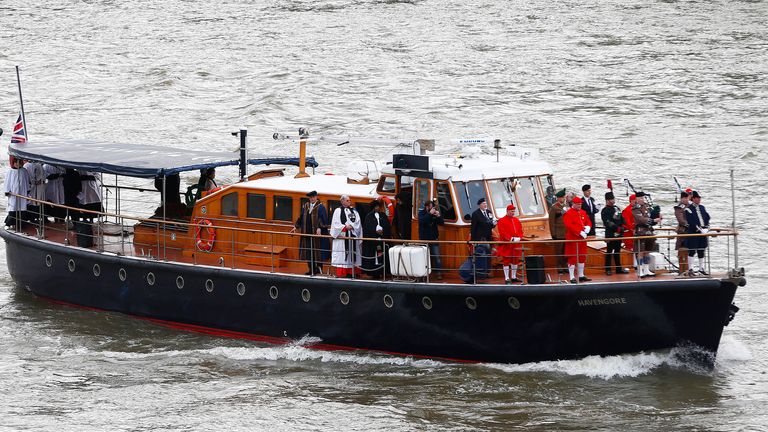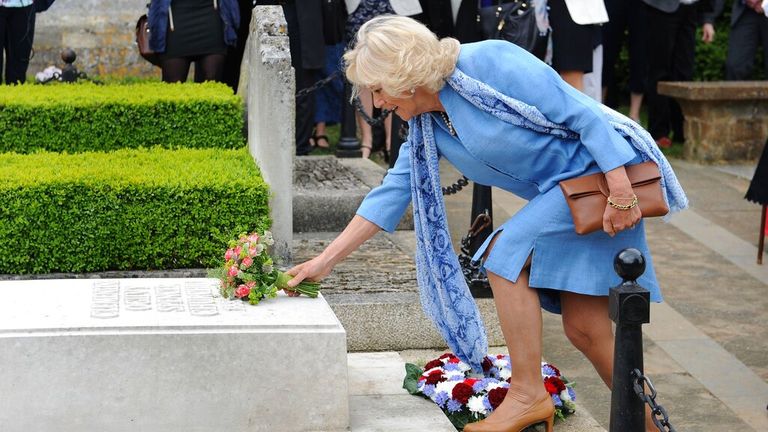How the Queen requested Sir Winston Churchill to receive a full state funeral - the largest Britain has seen
Sky News looks at what happened at the last state funeral in Britain for Sir Winston Churchill in 1965, as the nation prepares to bid a final farewell to the Queen on Monday.
Saturday 17 September 2022 03:58, UK
The Queen's funeral on Monday will be the first full state funeral held in Britain since the death of Sir Winston Churchill on 24 January 1965.
The first of 15 prime ministers to serve the Queen, the World War Two leader received what was the largest state funeral in history, witnessed by an estimated worldwide television audience of 350 million people.
Her Majesty's funeral, which follows a record-breaking 70-year reign, could become the most watched broadcast in history.
State funerals are traditionally reserved for the monarchy.
Churchill - who was prime minister from 1940 to 1945 and 1951 to 1955 - is one of just three British political leaders to be granted the honour.
Queue to see monarch lying in state paused - live updates
Princess Diana, the Queen Mother and Prince Philip were given ceremonial funerals.
The main difference is a state funeral, paid for by the public, must be debated and agreed by MPs and requires the assent of both the Crown and parliament.
Here, Sky News looks at how the send-off for Churchill unfolded - giving an insight into what we might expect at the Queen's funeral.
'An inspiring leader in the hours of our greatest danger'
Arrangements for Churchill's funeral were planned years ahead of his death, under the codename Operation Hope Not.
However, the Queen personally wrote to parliament to express the desire that the entire nation "should have the opportunity to express their sorrow".
In a letter to MPs granting permission for Westminster Hall and St Paul's Cathedral to be used as part of the state funeral, the monarch wrote:
"I know that it will be the wish of all my people that the loss which we have all sustained by the death of the Right Honourable Sir Winston Churchill should be met in the most fitting manner and that they should have an opportunity of expressing their sorrow at the loss and their veneration of the memory of that outstanding man who in war and peace served his country unfailingly for more than fifty years, and in the hours of our greatest danger was the inspiring leader who strengthened and supported us all."
Hailing Churchill as a "national hero", the Queen added: "I have directed that Sir Winston's body shall lie in state at Westminster Hall and thereafter the funeral service shall be held in the Cathedral Church of Saint Paul."
Arthur Wellesley, the 1st Duke of Wellington, and William Gladstone - said to be the inspiration for Churchill - are the only other British premiers to have received the same privilege.
Watch live stream of the Queen lying in state
Goodbye to a 'great Briton'
More than 320,000 people joined the three-mile-long queue to pay their final respects to Churchill while he lay in state for three days at Westminster Hall until Saturday 30 January 1965 - with the procession described as having the "mesmeric effect of a river flowing past".
Big Ben was silenced at 9.45am before his coffin was placed on a gun carriage escorted by military bands to St Paul's Cathedral.
A 90-gun salute, one for every year of the former prime minister's life, was fired as the cortege passed St James's Park.
The coffin was carried into the cathedral at 10.49am with more than 3,000 people in attendance, including the Royal Family and representatives from more than 100 countries.
The order of service featured a number of Churchill's favourite hymns, chosen by his wife, Clementine, and family, including Mine Eyes Have Seen The Glory Of The Coming Of The Lord and He Who Would Valiant Be.
Read more:
Queen's funeral plans: Everything you need to know
How do queues for the Queen compare to previous monarchs and prime ministers?
Cranes bow for former PM
Churchill then made his final journey along the River Thames on board the motor vessel Havengore, which led a flotilla of smaller boats on the commemorative journey.
The same boat was later used to carry nine members of the Royal Family during the Queen's Diamond Jubilee celebrations in 2012, leading a fleet of more than 1,000 vessels during a pageant on the Thames.
Three years later in 2015, Havengore retraced the original journey it made in 1965 to commemorate the 50th anniversary of Churchill's funeral.
Iconic images show cranes in the London docks "bowing" to honour Churchill's coffin passing by.
The wartime leader's family joined dignitaries for a service of remembrance held on board, with a wreath cast on waters opposite the Palace of Westminster.
Train ride to final destination
In accordance with his wish to be buried alongside his parents, a special steam train was commissioned to transport Churchill's coffin from London Waterloo to Handborough in Oxfordshire.
The baggage van of Locomotive No. 34051 Winston Churchill - one of 44 named after people involved in the Battle of Britain - had previously been used to carry pigeons and vegetables, according to the National Railway Museum.
His body was then taken to St Martin's Church in the village of Bladon for a private burial.

